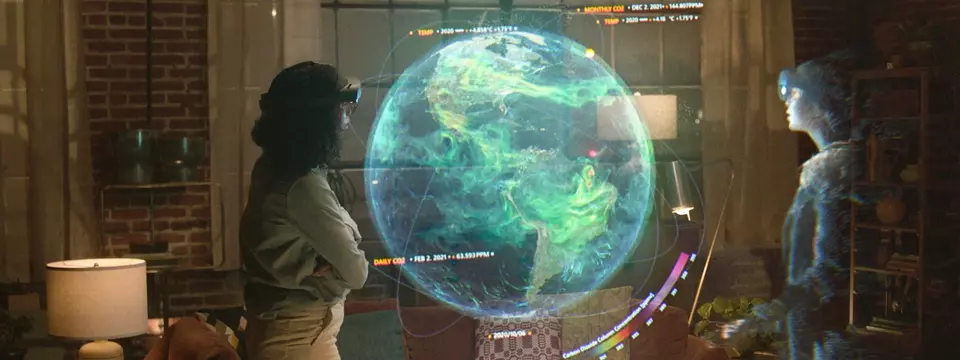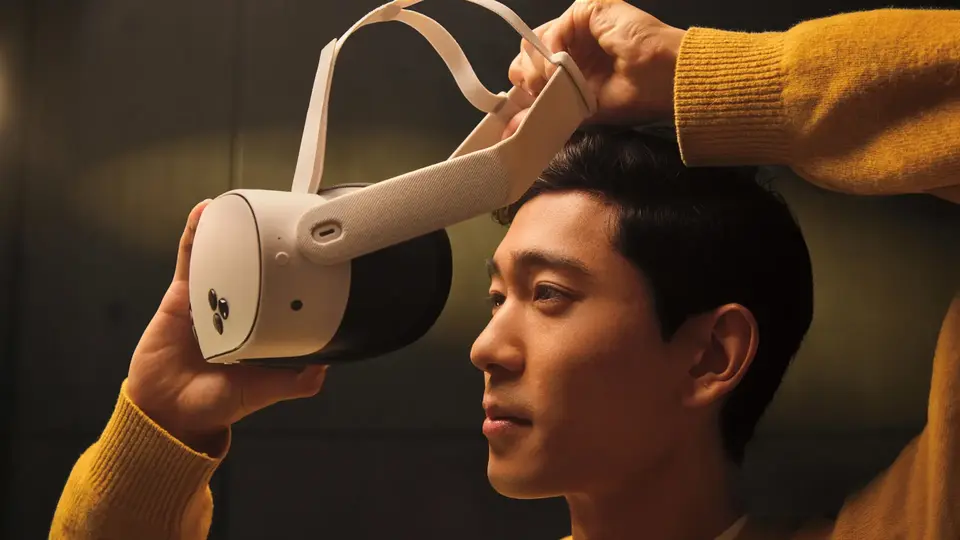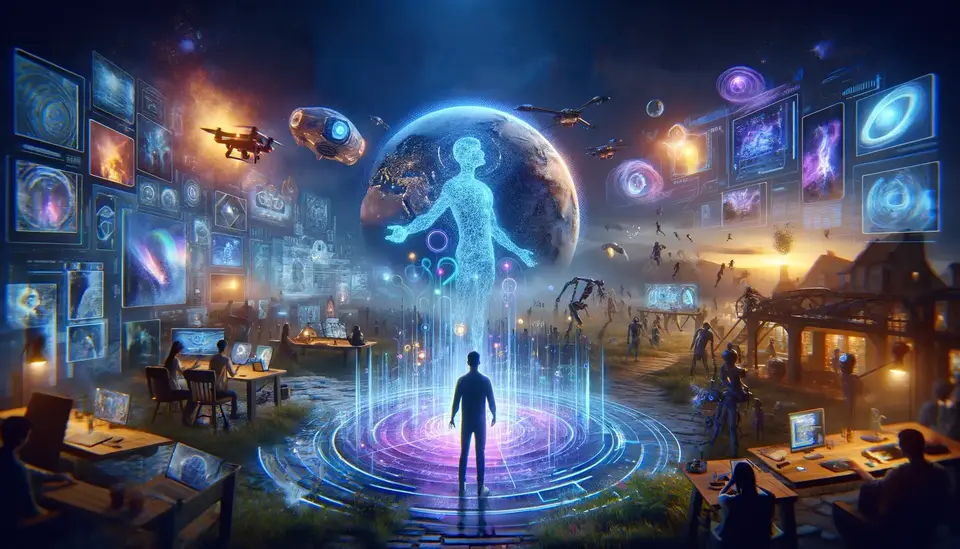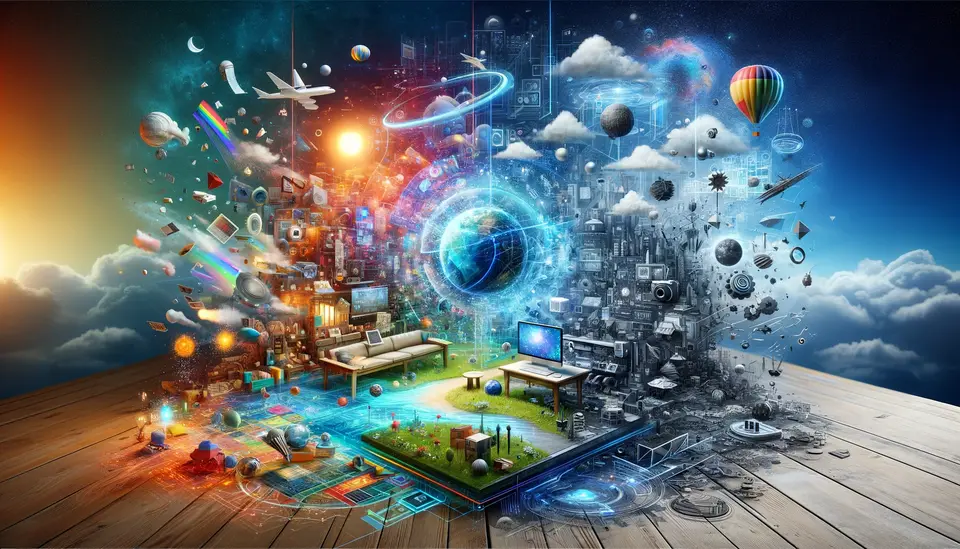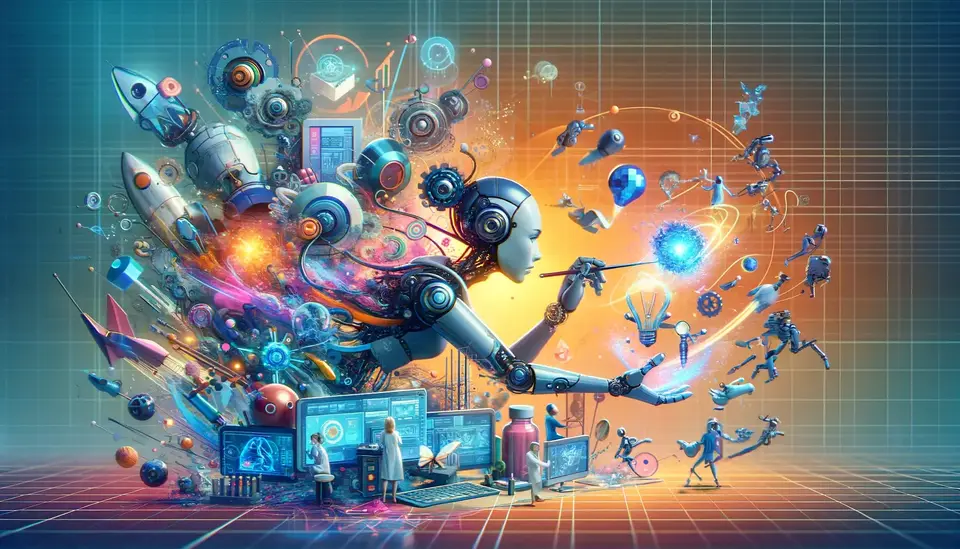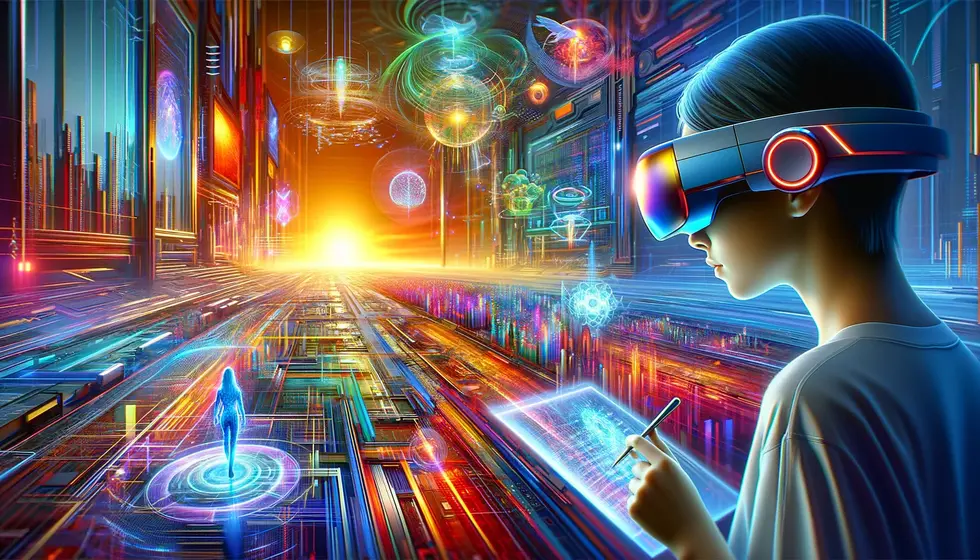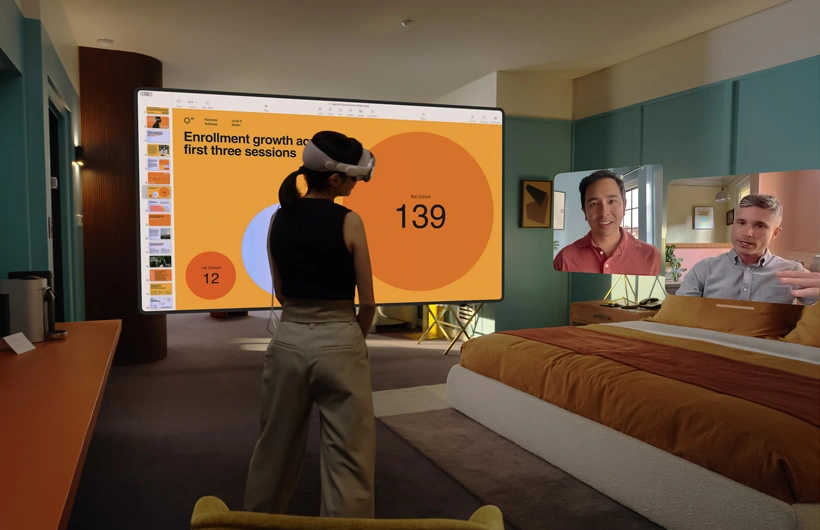The Future of Mixed Reality
Posted on May 23, 2023 6 minutes 1120 words
Table of contents
Imagine a world where the boundaries between the physical and digital blur, where your living room transforms into a high-end gaming environment, or your office desk evolves into a dynamic, interactive workspace with a single command. Welcome to the world of mixed reality (MR), a cutting-edge technology that melds real and virtual worlds to produce new environments and visualizations. This piece seeks to navigate the future trajectory of mixed reality, assessing its potential to reshape industries and the very fabric of our daily lives.
The Current State of Mixed Reality
The allure of mixed reality today lies in its ability to superimpose synthetic content onto the real world, allowing interaction in a way that’s intuitive and grounded in our understanding of physical space. It’s more than just a gaming tool or a novel way to hold meetings; it’s already being utilized across various sectors with impressive results.
Education has seen a massive shift with MR, making learning more interactive and immersive. In healthcare, surgeons use MR for complex procedures, visualizing the human body like never before. The manufacturing industry employs MR for training, improving safety and efficiency. Entertainment is evolving, providing audiences unique, immersive experiences. Despite being in its early stages, mixed reality has shown the capacity to revolutionize how we live, learn, and work.
Technology Behind Mixed Reality
Mixed reality owes its existence to several key technologies:
Spatial computing allows the digital and physical to interact in three dimensions, enabling more immersive and interactive experiences.
Advanced computer vision lets devices understand and interpret the physical environment, a prerequisite for integrating virtual objects into the real world.
Machine learning algorithms continually improve the system, making it more adept at recognizing and adapting to the user’s environment.
Haptic feedback provides tactile responses, allowing users to ‘feel’ virtual objects, increasing immersion.
Mixed Reality: The Future Perspectives
As mixed reality (MR) evolves and adapts, it has the potential to fundamentally transform our interaction with the digital world. Here are several detailed aspects of the future perspectives of mixed reality:
Enhanced sensory experiences
While today’s MR experiences are primarily visual, the future will bring more comprehensive sensory engagement. The integration of technologies such as advanced haptic feedback and spatial audio will make these experiences more immersive and realistic.
For instance, haptic technologies are advancing rapidly, providing more detailed and nuanced tactile feedback. Future MR applications may allow you to virtually ’touch’ and ‘feel’ the texture of an object or the ‘resistance’ in a virtual control, increasing the realism and applicability of MR in fields like e-commerce and remote machine operation.
Moreover, spatial audio, the technology that allows sounds to seem like they’re coming from specific locations in three-dimensional space, will enhance the sense of immersion. This could revolutionize entertainment experiences, making virtual concerts or theater performances feel like you’re actually there in person.
Increased accessibility
As with any evolving technology, MR hardware and software will become more refined, affordable, and user-friendly, leading to increased accessibility. We’ll see a wider range of MR devices – from high-end headsets for professionals to more affordable options for casual users. Devices will also become more comfortable to wear for extended periods and will eventually shrink to the size of regular eyeglasses.
Additionally, the software will become more intuitive and tailored to individual users. This might involve better recognition of user commands, more natural ways of interacting with the digital content (like gestures or voice commands), and personalized content based on the user’s preferences and habits.
Integration with AI
The integration of AI and MR will make digital content more adaptive and personalized. As AI algorithms become more sophisticated, they’ll be able to understand and predict user behavior better, tailoring the MR experience to individual users.
Imagine an MR learning app that adapts to your learning style, presenting content in ways that you find most engaging. Or a virtual assistant that not only understands your commands but also anticipates your needs based on your past behavior, the current context, and a wealth of other data.
Convergence with the Internet of Things (IoT)
As the number of smart, connected devices in our homes and workplaces continues to grow, these devices will increasingly become part of the MR landscape.
Imagine your MR glasses being able to control all the IoT devices in your home. You could look at your smart thermostat and adjust the temperature with a simple gesture, receive visual notifications about the food in your smart fridge, or even see a step-by-step cooking guide projected onto your kitchen counter.
Advanced Real-Time Collaboration
MR will enable advanced forms of collaboration, both in professional settings and in social contexts. Imagine a team of designers from around the world collaborating in real-time on a 3D model as if they were in the same room, or friends watching a movie together and sharing reactions in real-time, even though they’re physically apart.
In conclusion, the future of MR is promising and full of opportunities. By leveraging advancements in sensory technology, AI, IoT, and more, MR has the potential to change our lives in profound ways. However, as we move toward this exciting future, it’s important to address challenges such as privacy, accessibility, and health impacts to ensure that MR technology benefits everyone.
Seamless AR/VR Transitions
In the future, MR devices might offer the ability to transition seamlessly between Augmented Reality and Virtual Reality. This means you could switch from interacting with digital content superimposed on the real world to being fully immersed in a virtual environment. This could have exciting applications in areas like gaming, remote work, and socializing.
The Impact of Mixed Reality on Society
Mixed Reality (MR) stands poised to fundamentally reshape society. It will revolutionize education, making learning immersive and interactive, and transform the workplace by enabling real-time collaboration in 3D environments. MR will redefine social interaction, creating virtual spaces for global connection, while promoting inclusivity by enhancing accessibility for those with disabilities. However, the rise of MR also brings challenges, such as potential breaches of privacy and the need to redefine public and private spaces in a digital context. As such, while MR’s societal impact promises transformative change, it necessitates a balanced approach to fully leverage its benefits and mitigate its risks.
Conclusion
The future of mixed reality is rife with possibilities, but it isn’t without its share of hurdles. However, if the technology’s trajectory thus far is any indication, we are on the precipice of an era where the lines between the digital and the physical are indistinguishably blurred. As we anticipate the growth of mixed reality, it’s vital to approach it with a sense of balanced optimism—acknowledging the transformative potential it holds, while cautiously navigating its challenges.

